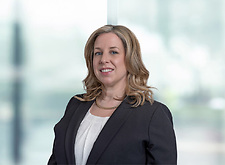Last Friday, members of the NYS Legislature introduced a bill aimed at clarifying the definition of “permanent place of abode” under Tax Law § 605(b)(1)(B) for statutory residency purposes. Under that statute, a person is generally taxable as a resident if they meet a two-pronged test: (1) maintain a “permanent place of abode” in New York and (2) spend more than 183 days in New York.
Readers of this column are no doubt familiar with the 2014 decision in Gaied v. N.Y. State Tax Appeals Tribunal where the highest court in New York State found that the NYS Tax Department was interpreting “permanent place of abode” (“PPA”) far too broadly. In sum, the Gaied Court held that a dwelling cannot be considered a person’s PPA unless, among other things, the person has a “residential interest” in the place. In Gaied, this meant that an apartment maintained by the taxpayer for his parents could not be his PPA and, consequently, the Tax Department could not tax him as a resident. Comprehensive analysis of the Gaied case can be found here and here, but the relevant (and seemingly obvious) takeaway from the case is that, to qualify as a PPA, a dwelling must be actually “utilized as the taxpayer’s residence.”
In practice, the Gaied Court’s seemingly straightforward mandate has presented considerable challenges during some residency audits. Both taxpayers and practitioners have lamented the fact that some auditors continue treating dwellings such as rarely-used vacation homes as a taxpayer’s PPA, even though doing so plainly contravenes Gaied.
Fast forward to last week, Senator Kenneth P. Lavalle (R – Port Jefferson) and Assemblyman Fred W. Thiele, Jr. (D – Sag Harbor) each introduced bills in their respective chambers that would address this situation and further the spirit of Gaied and the legislative intent upon which that case rested. Both the Senate bill (S.6860) and the Assembly bill (A.8610) would define the term “permanent place of abode” to specifically exclude a dwelling if three criteria are met:
- The dwelling is not used as the taxpayer’s principal residence,
- The dwelling is located more than 50 miles from the individual’s place of employment in New York; and
- The taxpayer did not stay overnight at the dwelling more than 90 nights during the taxable year.
Similar legislation was previously proposed on two occasions, first in the 2011-2012 Legislative Session (A.6266-C/S.3998-C) and then in the 2013-14 Legislation Session (A.4677-A/S.3642-A), however both times, after passing the Senate, the bills died in the Assembly. We are encouraged that this time could be different. After all, the two previous bills were introduced before the High Court’s decision in Gaied. And given the Court’s deference to the legislative intent in Gaied, it just makes sense for the Legislature to take a step towards codifying their intent given the Tax Department’s apparent aversion to effectuating that intent.


